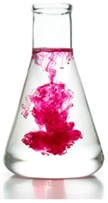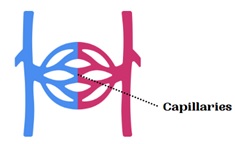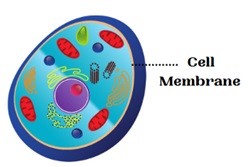Getting Acquainted Further
1) What Is Cellulose, and Why Is More Time Required for Its Digestion?
- Cellulose is a complex carbohydrate.
- Plants make their food in the form of glucose, which combines to form cellulose. It is stored in different plant parts.
- Cellulose has a complex structure and requires the presence of specific enzymes for digestion; hence it takes more time to digest.
2) Can Humans Digest Cellulose?
- No humans cannot digest cellulose as they do not have the necessary enzymes. Also, an additional stomach chamber that helps cellulose digestion is absent in humans.
- Cellulose remains undigested and is egested out of the body in the form of faecal matter.
3) What Is the Nutrient Cycle?
- A continuous flow of nutrients in the environment or ecosystem is called a nutrient cycle.
- The nutrient cycle starts with the synthesis of food by plants using the nutrients in the soil.
- These nutrients are then passed to animals, either herbivores or carnivores, in the form of the food they eat.
- Once the plants and animals are dead, their bodies are decomposed by the decomposers, and the nutrients move back into the soil.
- This cycle repeats to ensure the regular flow of nutrients in the environment.

4) What Is Diffusion? State Examples of Diffusion Found in Daily Life.
Diffusion stands for the spreading of a substance from a level of high concentration point to a low concentration point.
Examples
- Spreading of perfume drops from a spray bottle to surroundings.
- Spreading of the aroma of an incense stick from the source to the surroundings.
- Spreading of a dye in a whole beaker of water when a tiny drop of water is added.
- The exchange of oxygen and carbon dioxide in the lungs also takes place by the process of diffusion.

5) What Are Blood Capillaries? How Are They Different From Other Blood Vessels?
Blood capillaries are the smallest blood vessels that connect arteries and veins. They are different from the other blood vessels for the following reasons—
- They have the thinnest of all blood vessels.
- They are located deep inside tissues.
- Capillaries can transport both oxygen-rich and carbon dioxide-rich blood.

6) What Is a Cell Membrane? Why Is It Essential for a Cell?
- The cell membrane is the outermost covering that protects a cell.
- It is essential for a cell due to the following reasons—
It protects the cell from foreign objects.
It maintains the moisture in the cell and prevents it from drying.
It transports the required and unwanted materials across the cell.

CBSE Schools In Popular Cities
- CBSE Schools in Bangalore
- CBSE Schools in Mumbai
- CBSE Schools in Pune
- CBSE Schools in Hyderabad
- CBSE Schools in Chennai
- CBSE Schools in Gurgaon
- CBSE Schools in Kolkata
- CBSE Schools in Indore
- CBSE Schools in Sonipat
- CBSE Schools in Delhi
- CBSE Schools in Rohtak
- CBSE Schools in Bhopal
- CBSE Schools in Aurangabad
- CBSE Schools in Jabalpur
- CBSE Schools in Jaipur
- CBSE Schools in Jodhpur
- CBSE Schools in Nagpur
- CBSE Schools in Ahmednagar
- CBSE School In Tumkur











